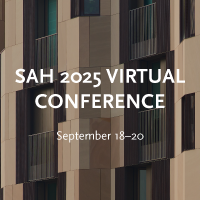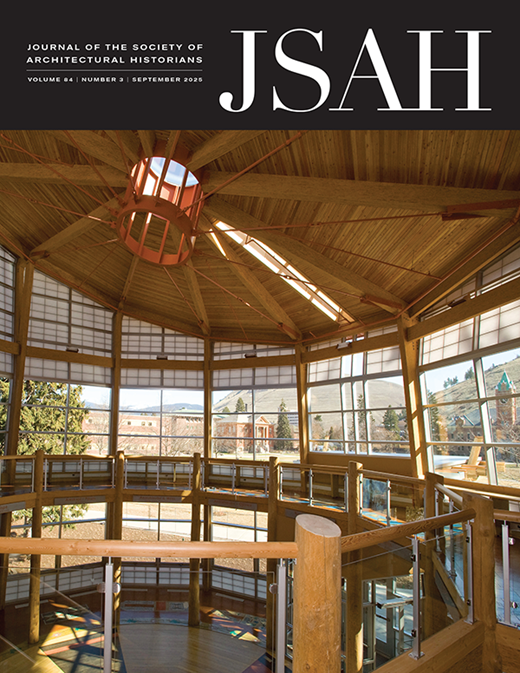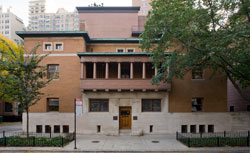-
Membership
Membership
Anyone with an interest in the history of the built environment is welcome to join the Society of Architectural Historians -
Conferences
Conferences
SAH Annual International Conferences bring members together for scholarly exchange and networking -
Publications
Publications
Through print and digital publications, SAH documents the history of the built environment and disseminates scholarship -
Programs
Programs
SAH promotes meaningful engagement with the history of the built environment through its programs -
Jobs & Opportunities
Jobs & Opportunities
SAH provides resources, fellowships, and grants to help further your career and professional life -
Support
Support
We invite you to support the educational mission of SAH by making a gift, becoming a member, or volunteering -
About
About
SAH promotes the study, interpretation, and conservation of the built environment worldwide for the benefit of all
Membership grants you access to exclusive resources and programs and provides support for new research and programs. Compare benefits across all our membership levels and choose the membership level that works for you.
Every Member Receives
- A yearlong subscription to the Journal of the Society of Architectural Historians (JSAH). Choose from digital access only or a combined print and digital subscription.
- On-demand access to the complete JSAH Archive (1941–present)
- Member rates for registration to SAH’s Annual International Conference
- AIA CES credits earned through conferences and study tours
- Eligibility to apply for SAH grants and fellowships
- Access to members-only lectures, virtual meetups, and more
- Connection to peers through 10 topic-focused SAH Affiliate Groups
- Access to more than 200,000 images of the built environment through the SAHARA database
- Access to SAH Commons online scholarly network
- Discount of 50% on JSTOR access with JPASS
- Eligibility to serve on the SAH Board or committees
- Subscription to the SAH Newsletter and Opportunities Weekly Roundup
Membership Levels
SAH Member
Our most popular membership tier offers optimized pricing to help everyone participate affordably in our community. Emerging scholars can apply for a one-year membership grant that helps bridge the gap between the Society's subsidized student memberships and full-cost SAH memberships.
| Rate | Description | Price: Digital | Price: Digital + Print |
| Individual | 12-month benefits for one person | $163 | $173 |
| Joint | 12-month benefits for two people (domestic partners). Each person receives a unique member ID and their own login to the member portal. | $233 | $243 |
| Retired/Emeritus | Discounted individual membership for former professionals on a fixed income | $98 | $108 |
| Reduced | Discounted individual membership for people working independently or at an institution without full-time employment. This includes adjunct and contingent faculty unemployed workers. | $98 | $108 |
| Global (Available Oct 1, 2025) | Affordable membership rates for global scholars living and working in countries the World Bank classifies as “low income.” | Scholars with qualifying addresses may receive up to 75% off the Individual Digital rate. Learn more. | |
| Student | Discounted individual membership for students currently enrolled in an undergraduate or graduate program in architectural history or related disciplines. | $60 | $70 |
| Professional Associate | Discounted individual memberships for groups of professionals working in the same museum, office, or firm. Ideal for architects, research or preservation groups, museum staff, and public design education. | $179 for first member + $103 for each additional member at the same institution | |
Upper-Level Member
Show your support for SAH’s mission by including a tax-deductible donation along with your Individual or Joint print + digital membership. Upper-level members receive all the benefits of a regular membership plus:
- Discount on registration for SAH Annual Conference, rates given below.
- Acknowledgement in four quarterly issues of JSAH, the annual report, and quarterly donor reports
- Membership to Frank Lloyd Wright National Reciprocal Sites Program, with which our headquarters, the Charnley-Persky House is affiliated.
- Early registration access for SAH Study and Excursion tours
| Tier | Donation | Price with Individual Membership | Price with Joint Membership | Discount on Annual Conference Registration |
| Cornerstone | $150 | $323 | $393 | 5% |
| Pillar | $350 | $523 | $593 | 7% |
| Keystone | $500 | $673 | $743 | 8% |
Life and Benefactor Member
Show your long-term commitment to SAH by becoming a Life member. Life members’ dues provide unrestricted funds to support the Society’s mission and continued opportunities for all members. Lock in your price and enjoy the most comprehensive suite of member benefits without the need to renew each year.
Life members receive these additional benefits:
- Acknowledgement in JSAH, annual report, and quarterly donor reports
- Membership to Frank Lloyd Wright National Reciprocal Sites Program, with which our headquarters, the Charnley-Persky House is affiliated.
- Early registration access for SAH Study and Excursion tours
- Specialty membership card
- Free tour of SAH's historic headquarters at the Charnley-Persky House in Chicago, IL
- One complimentary walking tour during SAH Annual Conference, reserved in advance, on a space-available basis.
- Free copy of an SAH Buildings of the United States book of your choice
Current Life Members can enhance their commitment to SAH by becoming a Benefactor through a $5,000 tax-deductible donation.
| Tier | Price | Donation Total |
| Life | $5,000 (one payment or four annual payments of $1,250) | None * |
| Benefactor | $10,000 | $5,000 |
* Life memberships are amortized over a period of 20 years and pay for annual benefits. There is no tax-deductible portion associated with Life membership.
President's Circle
SAH is immensely grateful to the many Life and Benefactor Members who continue to support the Society financially year after year. President’s Circle status recognizes the ongoing commitment these members show.
President’s Circle status is an annual distinction given to all Life and Benefactor members who make gifts to the Society of Architectural Historians totaling $1,000 or more during a given 12-month period. The status is applied to a donor as soon as they have achieved $1,000 in gifts within a single calendar year. The status is valid for 12 months from that date, and the date shall serve as an anniversary by which to renew their President's Circle status with one or more gifts totaling $1,000.
President's Circle members receive special benefits as thanks for their support:
- 10% discount on member-rate conference registration
- Recognition from the podium at SAH Celebrates annual gala
Limited-Access Affiliate
Affiliate Access permits one person to participate in the activities of one or more SAH Affiliate Groups and the SAH Commons online scholarly network, without access to any other SAH benefits such as JSAH or Membership registration rates for conferences or events. It is not considered an SAH Membership. Price is $25 per year.
Institutional Subscription
Institutional membership provides a subscription to JSAH and/or JSAH Online for communities of readers at public and academic libraries, museums, schools of architecture, architectural history departments, and other large institutions. Institutional subscribers receive the SAH Newsletter, qualify for discounted Career Center job ads, and member-rate registration for two library staff attending the SAH Annual International Conference.
The University of California Press handles institutional subscriptions on SAH's behalf. Visit the UC Press website to join or renew your Institutional subscription.
| Subscription Type | Price per Year | Additional Benefits |
|---|---|---|
| Digital Only | $693 | |
| Print + Digital - Domestic | $781 | |
| Print + Digital - International | $807 | |
| Sustaining | $881 |
|
Affiliate Groups
SAH Affiliate Groups are comprised of SAH members who share a common, narrowly defined interest, scholarly or otherwise. Participation in Affiliate Group activities is a benefit of SAH membership.
SAH Chapters
SAH has chapters located across the United States. Chapters are independently run organizations that are affiliated with SAH. SAH members can join chapters in their region.
Member Stories
Member Stories: Anna Sokolina
Jul 21, 2025
by
SAH News
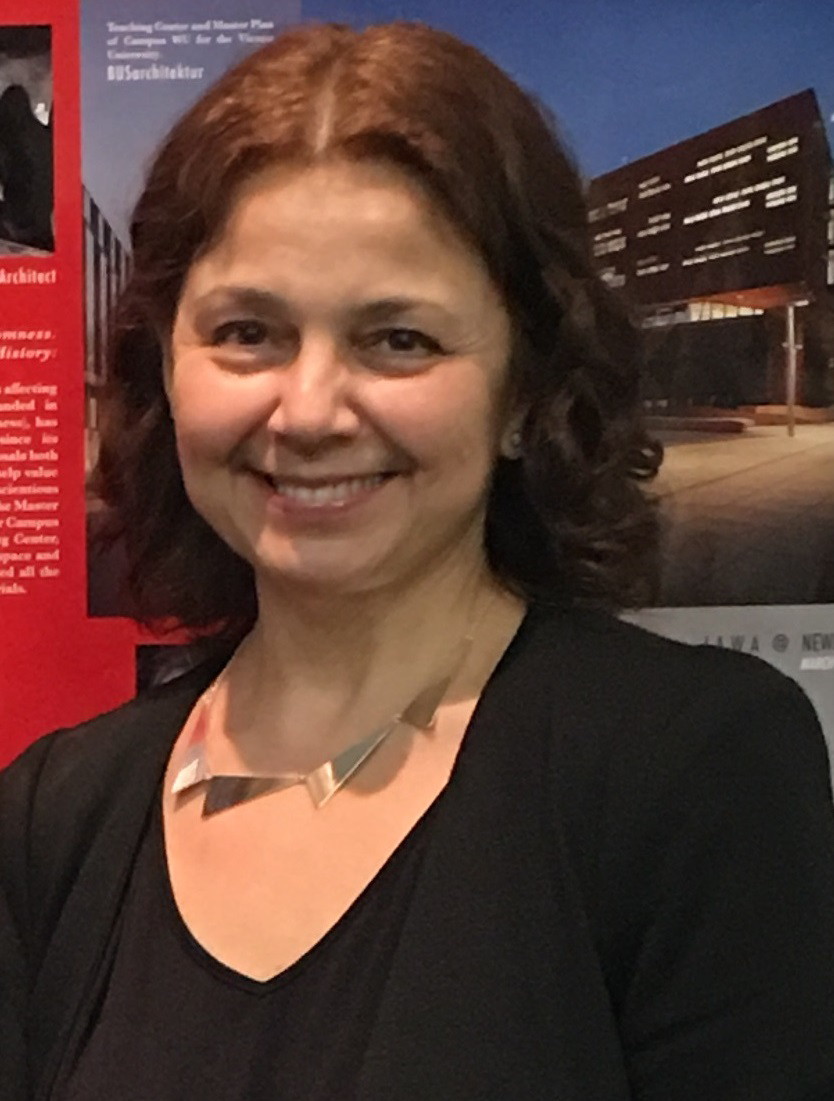 To begin, tell us a little about your background and career path.
To begin, tell us a little about your background and career path.
I am a trained architect, architectural historian, and arts administrator. Integrity, spiritual learning, deep professional connections, and family ties have a significant impact on the direction of my life. I was born in Leningrad, former Soviet Union; when I turned four years old, my mother showed me to the civil engineering office she headed at the state design institute and introduced to her coworkers as “the Future Architect” and they cheered me with respect, my passion for architecture started there. My father was born in Kyiv, Ukraine, was a World War II veteran and later edited a scientific periodical and lectured at the academy. My family moved to Moscow after I was born. There I graduated from Third German School, and in classical piano from Department of music at the regional House of Pioneers; then from Moscow Institute of Architecture, MARKHI majoring in Architecture with honors in Theory-History.
My first publication appeared during my junior year in the book of MARKHI conference papers; first internships were foundation and theory-history practicums and construction practicum at the silicate plant which produced concrete slabs for large-panel buildings, and practice at MARKHI architectural construction bureau. I worked as architect at the Central Academic Research Institute for Theory and History of Architecture (CNIITIA / VNIITAG) in Moscow, studied there in the PhD program and received my doctorate in Theory and History of Architecture, Landmarks Restoration and Preservation, with a thesis titled “Interpreting Traditions in Architecture of the GDR.” During those years I got married and my son was born.
Following the collapse of the USSR, I was invited by the European Academy of the Urban Environment as lecturer in the UNESCO Sustainable Environments program, gave talks at a plethora of architectural centers in Germany and France, worked as guest writer at a range of German periodicals, and curated itinerant Paper Architecture exhibitions. I am utterly grateful for support to the Senate of Berlin, Gruen Berlin GmbH, Bauhaus Weimar, ENSAS in France, Deutscher Werkbund, RIAS Berlin, Deutsche Bundesbahn, the Anthroposophical Society in Dornach, Switzerland, and other professional and public centers.
When my family reunited with our relatives in New York City, my first job was as an artist at a studio in Tribeca, and my first exhibition at Lower Eastside Tenement Museum was supported by Kodak and reviewed in New York Times. I completed the Arts Administration program at New York University and interned at NYC Art Commission, Cooper-Hewitt Smithsonian Design Museum, and I experienced the terrorist attack on Twin Towers while interning at the Guggenheim Museum Curatorial Department mere blocks away in SoHo.
I have the privilege to serve as Honorary Advisor to International Archive of Women in Architecture (IAWA) and have solicited and submitted over twenty international collections. I am humbled serving on Advisory Board of H-SHERA Network, and it was a true honor for me contributing and serving on Advisory Board of Bloomsbury Global Encyclopedia of Women in Architecture edited by Lori A. Brown and Karen Burns, and of ARTMargins. I was also teaching theory-history and studio sequences at Miami University OH where I served on four academic committees and coordinated the Cage architecture gallery.
As founding chair of SAH Women in Architecture Affiliate Group I have had the honor of developing a range of programs and conference sessions advocating the cause of women in architecture. The Group provides a platform for collaborative scholarship and a forum for discussion and integrates professional standing of women in architecture with broader studies beyond borders.
What projects are you currently working on?
I am always drawing and painting, am now working on two intertwined book projects; also, in progress are a draft of a chapter, a conference presentation, and the SAH Women in Architecture Affiliate Group Program cordially invited to Illinois Institute of Technology as part of 1X1 Chicago 2025: Celebrating Women in Architecture.
What interests you most about architectural history?
At all times, the subject of my interest are people in architecture, and transformative ideas and practices beyond geographic or chronological boundaries. Of a special virtue for me are holistic constructs and individual and collective motivations to resilience and rebuilding. The difficult subject for me presents the disposition of architecture as target of warfare, versus the broadly adopted concept of collateral damage.
I am also interested in internal motivations of architectural neophytes, in the extension lines of individual beginnings. Trifold philosophies present for me a special appeal through juxtapositions of equity, justice, and dynamics of utopianisms in architecture; individual stories manifested through buildings and the prospects of teamwork now emanate a particular magnetism. My current research and exhibition focus: Warfare footprint as the origin of utopian constructs; women’s agency, and holistic trajectories of global transitions in architecture.
Who or what has had the biggest influence on your work or career so far?
Women in my family are my first and deepest professional inspiration, their light always guides me.
A personal milestone for me was my first trip to East Germany; the tour started in Sachsenhausen, a women’s concentration camp. There, I decided to write about women and architecture under warfare. Another lifechanging event was the “Man and Architecture Conference” in Järna, Sweden, learning about Steinerian anthroposophy and architecture, but most importantly, meetings and long conversations with Sergei O. Prokofieff who over the years advocated my book, Architecture and Anthroposophy and supported two editions published under patronage of multiple European foundations.
I have been also inspired by professional commitment of the IAWA founder Professor Milka Tcherneva Bliznakov. At the SAH Richmond Conference she approached me and a long-term friendship commenced by sharing research interests, four languages and many similarities of life and career. Milka established a long-distance non-voting status for me as the first IAWA Honorary Advisor and promoted my election on the mission to solicit architectural collections from the former Soviet Union. I stayed at her hospitable home together with Lois Davidson Gottlieb and Sarantsatsral Ochirpurev, she invited me to apply for Milka Bliznakov Prize, and I did so. After Milka’s passing, I donated to IAWA a part of my correspondence with Milka and boxes of study materials we shared. Friendships with Wanda Bubriski, Diane Elliott Gayer, Carmen Espegel, Marcia Feuerstein, Alice Finnerup Møller, Ada Jidado Nakie, Junko Matsukawa, Youngsoon Park, Ariunaa Purev, Maria Urmă, Paola Zellner Bassett, conversations with Solange d'Herbez de la Tour, Donna Dunay, Beverly Willis, Mary Zirin started through this fellowship.
When and how did you first become involved in SAH?
I joined SAH in 2001 when studying at NYU. I served as speaker at SAH Annual Conferences in 2002 and 2004, as session chair at SAH Annual Conferences in 2018 and 2021, and panelist in SAH CONNECTS programs in 2021 and 2024. When the SAH Board announced
an initiative to create topic-based affiliate groups, I reached out to then-Director Pauline Saliga with an idea. With her guidance and support from 49 SAH members, I submitted a proposal in 2019 to SAH Board to create the Women in Architecture Affiliate
Group (WiA AG), received a graceful approval, and also initiated the SAH WiA AG Registers and Legacy Committees. In 2021, our Registers Committee published the SAH Women in Architecture Bibliography composed by Barbara Opar, committee’s Co-chair, which contains over 1100 references of book and dissertation titles.
How has SAH enriched your experience in architectural history?
My SAH membership evolved as an immersive process of learning, serving, and working collaboratively. SAH conferences are always immensely productive for sharing discoveries, meetings with publishers offer a practical platform for discussion and book purchases, and award ceremonies and social events have provided me with delightful experiences. SAH CONNECTS program is essential for focused research; study days and tours have contributed to my awareness as a non-western professional. SAH publications such as JSAH and SAH Opportunities are indispensable, the network behind them expands the boundaries of the field. The Society has greatly enlightened my professional path.
Do you believe SAH changed as an organization or community during your membership? In what ways?
When I joined SAH, I was the first member from the former Soviet Union. So much has changed since then! The Society now relates to changing landscapes across continents. The proposal to create our Women in Architecture group was possible only due to global transitions and commitment of many distinguished peers. I also want to emphasize that our group presents a holistic platform for advocating a broader academic cause and we equally support all SAH members.
What advice would you give to your former self? How far back you go is up to you.
Now that I am in my final life trimester, my primary values are integrity, professional passion, commitment to mentoring and collegial teamwork. I merit my spiritual path and deep human connections and am proud and humbled to advocate women’s cause in architecture and women’s agency against war. I would advise my younger self to follow your call, see the light beyond physical boundaries, seek guidance of good people, understand the first principles, love and celebrate your friends and family, be grateful and generous.
Any final parting thoughts?
This SAH Questionnaire is incredible, I talked about it with my peers and family—such an inspiring opportunity to think holistically about the meaning of SAH, our networks within this milieu, of chronologies of the built environment across the globe, about our purpose and philosophies, generations before and after us, what is our true destination, our own peace and war. Thank you for graciously inviting my participation!
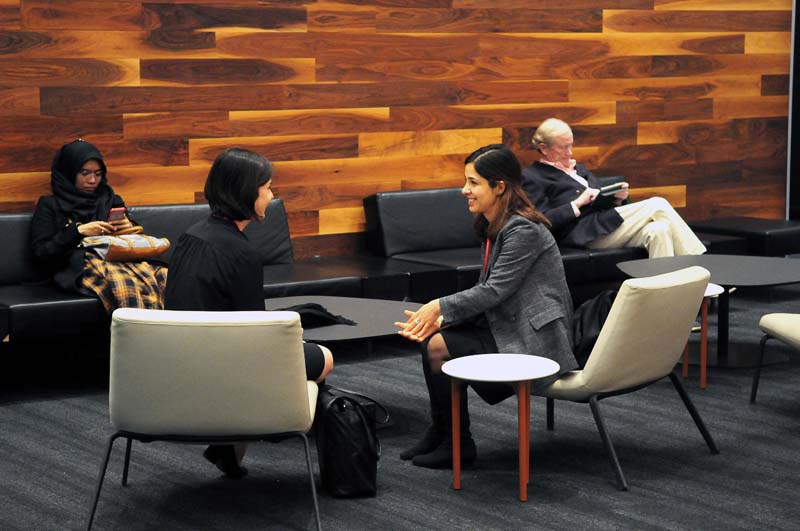
Membership Grants
Emerging scholars can apply for a one-year membership grant that helps bridge the gap between the Society's subsidized student memberships and full-cost SAH memberships.
